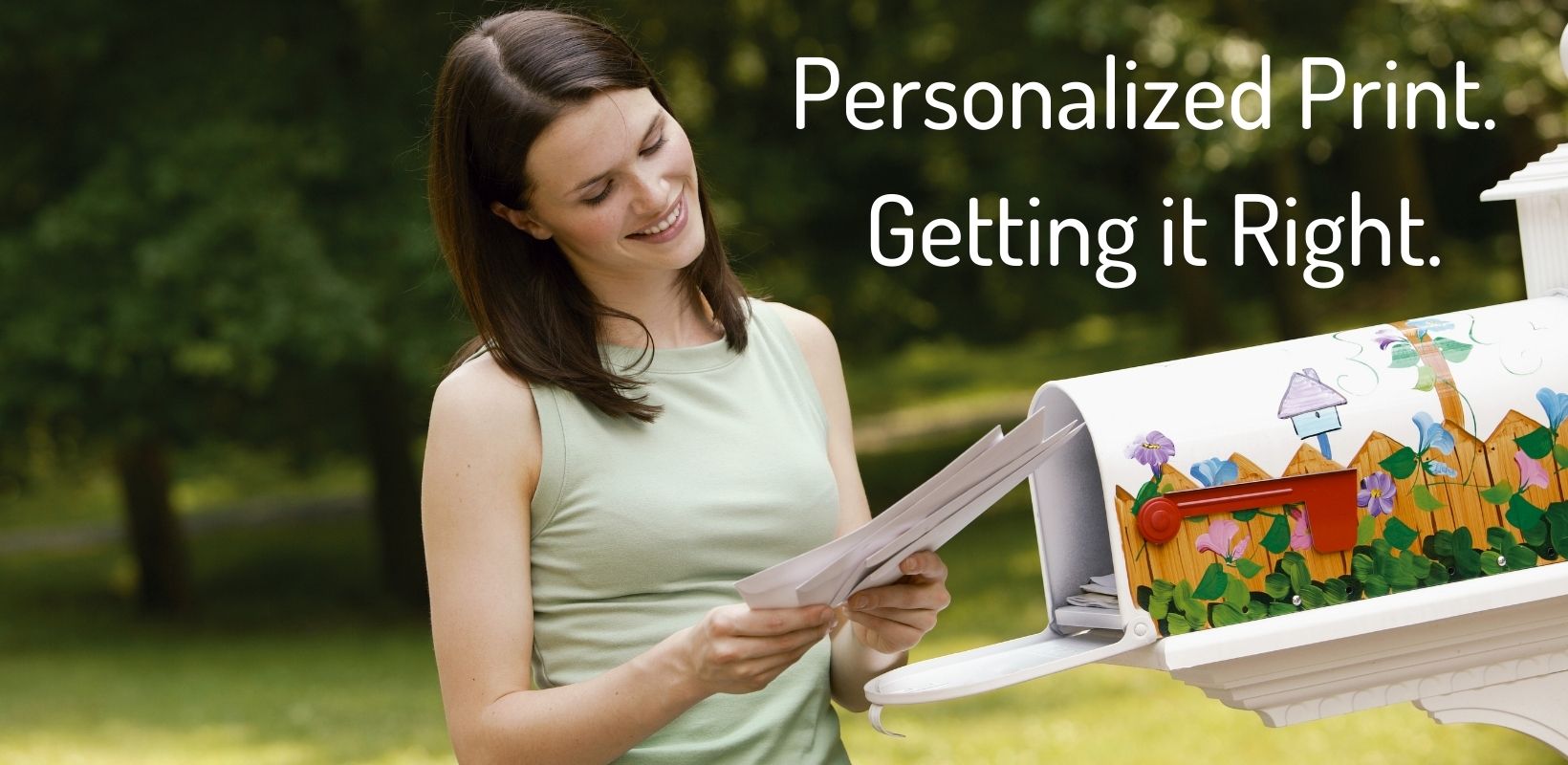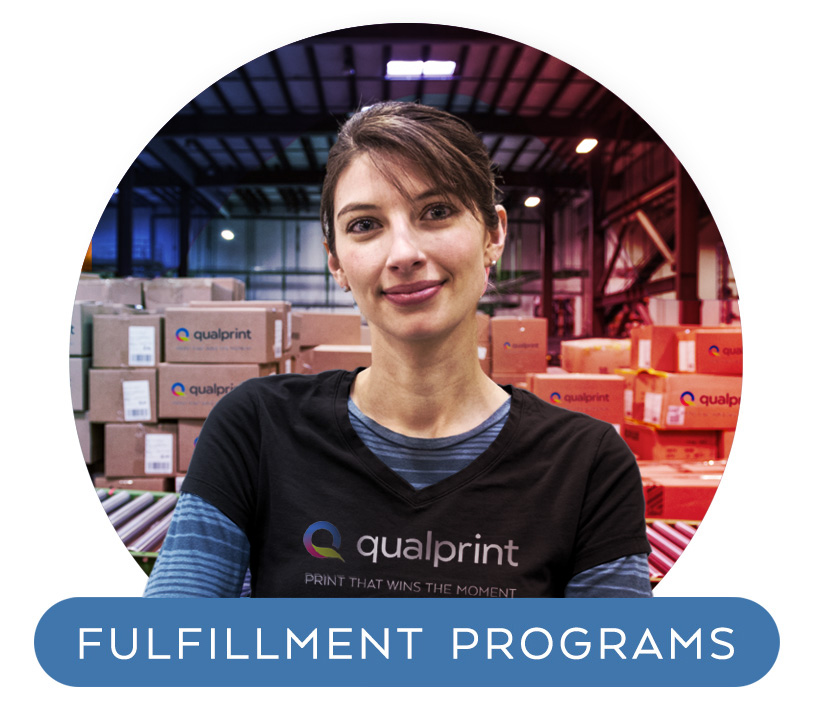Personalized Print. Getting It Right.

There’s lots of information out there about the importance of personalizing your marketing communications. Research shows that personalized direct mail drives higher conversion rates. More and more consumers say they expect brands to “know them” and offer them personalized messaging and offers. And a growing number of consumers report being “annoyed” by poor personalization or none at all.
“Treating Everyone in Your Audience the Same Isn’t a Strategy.
It’s Bad Marketing.”
So, marketers are aggressively creating personalized campaigns – some with great success. Others not so much. And bad personalization efforts can be worse than none. So, in this story we’ll look at how you can keep your personalization efforts in synch with what you actually know about your prospects. And how Qualprint can help you personalize your print marketing program.
To start, let’s take a look at what we mean by personalization.
Personalization – What We’re Talking About
A lot of the printed materials marketers send out have some level of personalization. At a minimum, the recipient’s name in the address and a “Hi, First Name” on the intro letter. But that’s not the kind of personalization we’re talking about here. We’re talking about the kind where you know more about someone, enough to talk to that person as an individual, and to offer them something useful – a piece of information, a customized offer or product recommendation – that helps you get the sale and ultimately makes them a fan of your brand.
How Marketers Fail at Personalization – Three Examples
Ever get a direct mail piece offering you a reward for being a loyal customer – and you’ve never even bought anything from the advertiser? How did that make you feel? Or let’s say you buy something like a coffee maker online. Next thing you see on your screen is an ad for the same coffee maker you just bought. And how about this? You do a search online about a sensitive medical condition and immediately start getting messages mentioning that condition without having signed up for anything.
All three are good examples of bad personalized marketing. In the first case the advertiser pretended to know you. In the second, the advertiser had all the information needed to know that pushing that coffee maker ad in front of you was a waste of money but failed to put the pieces together – maybe annoying you and creeping you out a little. In the third case, if not a privacy violation, it’s certainly insensitive and not likely to win the marketer any favor.
The key to good personalization is using whatever data you have to paint as complete and accurate a portrait of your prospect as possible – and then not overstepping the assumptions you make about what they might like and need. And, of course, respecting the fact that some data should not be used for privacy reasons. This all starts by understanding what data you have and how you got it.
Where Personalization Info Comes From
To keep it simple, there’s two basic types of personalization data.
The first is really knowing a lot about someone as an individual – at least as it relates to your business. This comes typically from personal interactions between your business and that person – the kind of data that populates CRM systems. This goes well beyond a person’s name and address to include, for instance, their likes, interests, purchase history, when they plan to buy next, any other interactions your business has had with the person over time. Smart marketers can use this data to begin talking to individuals as individuals vs. a demographic – creating content just for them – customized web pages, product recommendations, offers and loyalty rewards programs.
The second and most common type of personalization data is where you know a few things about someone – enough to segment them into a group. And then use guesswork or algorithms (“predictive modeling”) to make assumptions based on what other people “like them” do or have done in the past – assumptions like what they might be interested in, future needs or when they might be in the market for something. For instance, you might know a prospect’s age, where they live, something they looked at online or how long they’ve owned their car. This lets marketers push out messages such as the ubiquitous, “If you liked this, you might also like this,” a rebate offer for the brand of car a prospect last bought, or an age-appropriate offer for health insurance.
The key to using this kind of data successfully is not alienating your prospects by presuming to know more than you do.
How We Can Help
When it comes to print, we have many ways to help you personalize your program – boosting your conversion rates, helping you collect more valuable information on individual recipients and learning more about what messages work best.
One of our most powerful tools is our digital, variable data capability. This allows us to cost-effectively customize each individual print piece with different copy and even images. Based on the data you have and your goals, we can use this capability in many ways. Here are a few examples.
- We can add recipient names and other details to each piece of mail
- We can segment your list into groups and then send each group different, group-specific messages. We do this, for instance, for a non-profit’s fund raising program, breaking recipients into corporate donors, small individual donors, non-donors and past donors who haven’t given recently and sending each group different versions of the same mail piece.
- We can put different response mechanisms on each printed piece – for instance unique QR codes – that allow you to link members of a group to a group-specific webpage – or to track which recipients respond to each piece – giving you information about each respondent as well as what messages work best.
And personalization isn’t just about personalized content. It can also be about personalized timing. As an example, we can track your first-class direct mail pieces and let you know when each is delivered. This lets you personalize the timing for your follow-up emails or phone calls, dramatically increasing your success rate.
In conclusion, if you’re trying to get better at personalizing your print communications, talk to us. We have many personalization capabilities to offer, and an experienced team to help you figure out what will work best for your goals, the data that you have and your print program.
Contact us now
For more information and if you need assistance with printing and print marketing
Phone: (413) 442-4166
Blog Form
More stories from Qualprint...
Die-Cut Print Options & Die-Cut Examples
Die-Cutting in the print industry provides you with a creative way to differentiate yourself across the medium as well as enables a...
Top Ways to Improve Customer Experience at a Winery
Many customers who’ve visited a winery have felt something was missing in their experience? In an industry where every detail matters,...
Custom Printing for Marketing Agencies
Print remains an indispensable tool, partly because 75% of buyers find printed material to be more trustworthy than other types of...





